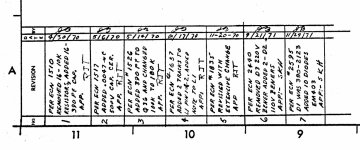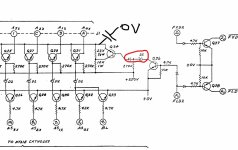BlaBla1985
Experienced Member
So, I'm doing this of the pictures I took while taking the machine apart last time. My best guess from looking at those, and the traces on the front and back of the boards, it's most likely the diode at D6 called D1 (which is a 1 of 1 in those boards). I'll have to take them out and see, also for numbers. Looking at the back picture that diode is a replacement, I can see it's been reworked.The weird thing is that those "ceramic disc" components don't seem to be on the schematic, the resistors and diodes are accounted for. Are you able to see any markings on them? I'm wondering if that one diode on the "bad board" was a field replacement that was wrong. It would help if you could see the traces and find out how that component fits into the wiring. Adding to the mystery, the schematic implies "rev 7" but the board says "rev 4".
Also, and correct me if I read that wrong, the schematic says it has a total of 35 diodes. On the board with the odd diode I see 17 "glass" diodes, 5 "Blue" diodes, and the weird black 1... I'm obviously missing something, I guess some of the diodes look like resistors at a glance?
Although I should have a few less diodes as I have the 74141 so that bit in the dashed line box is not on my boards.
Hmm, I'm creating more questions then answers this way, I'll take some stuff apart tomorrow and try to get some answers and go from there.


